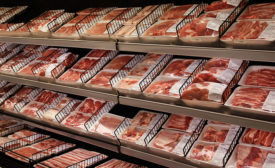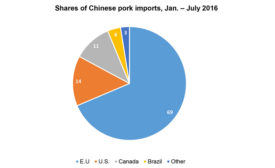Home » state of the meat processing industry
Articles Tagged with ''state of the meat processing industry''
State of the Industry 2019 | Workforce
Assembling the workforce puzzle
Read More
State of the Industry 2018
State of the Meat & Poultry Industry Workforce 2018
Baiting the employment hook: Long-term labor issues won't be resolved without processors improving their tactics to attract and retain workers.
Read More
State of the Industry 2018
State of Animal Handling 2018
Targeting humane solutions: A look at animal welfare in the meat and poultry industry
Read More
State of the Industry 2018
State of Food Safety 2018
Industry not yet the G.O.A.T., but climbing quickly
Read More
State of the Industry 2018
State of the Packaging Industry 2018
Flood of flexibility, functionality
October 11, 2018
State of the Industry
State of Food Safety: The juggling act continues
A look at recalls shows improvement in some areas, but deterioration in others — and the presidential election ought to be interesting to watch from a regulation angle.
Read More
Get our new eMagazine delivered to your inbox every month.
Stay in the know with The National Provisioner's comprehensive coverage of the meat and poultry processing industry.
SUBSCRIBE TODAY!Copyright ©2024. All Rights Reserved BNP Media.
Design, CMS, Hosting & Web Development :: ePublishing













